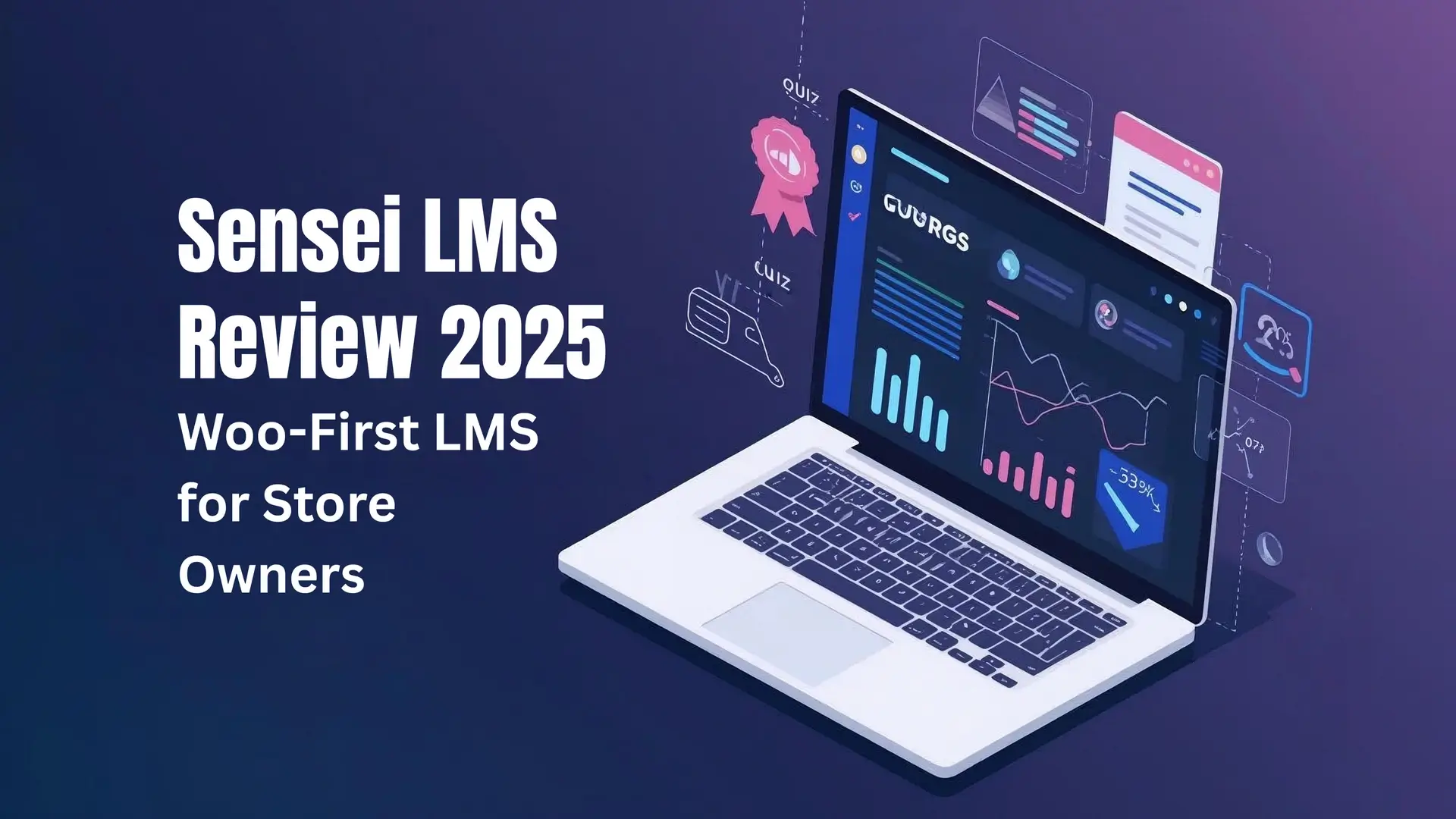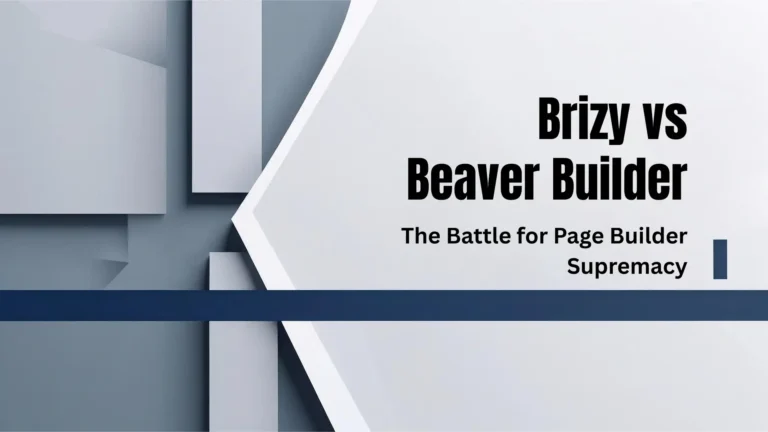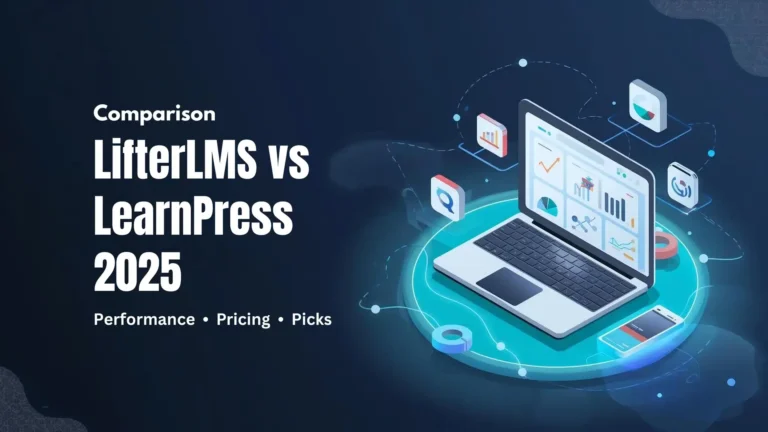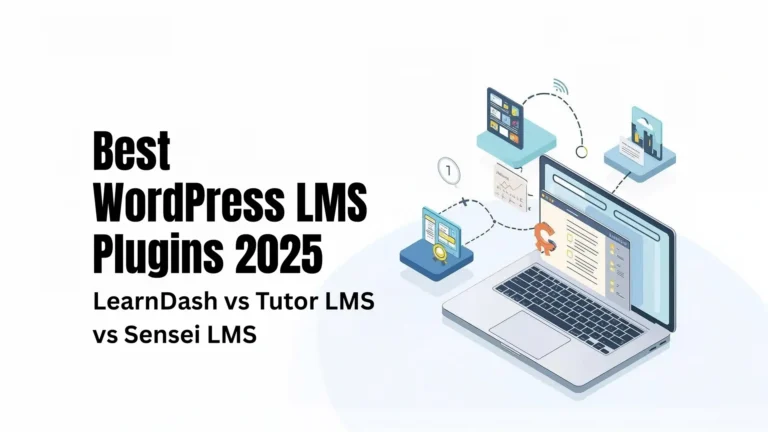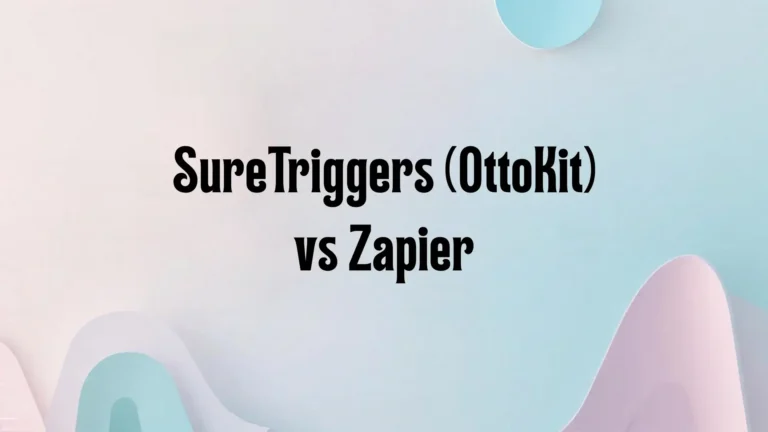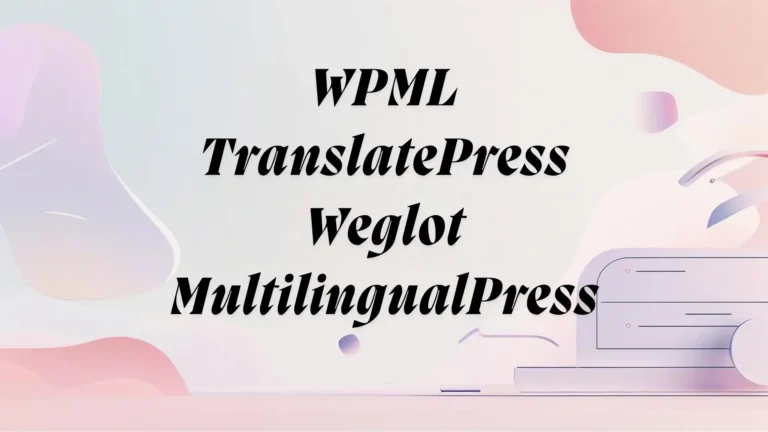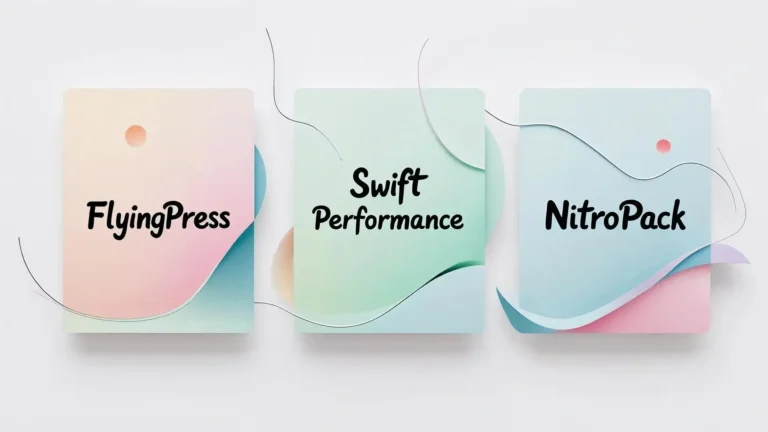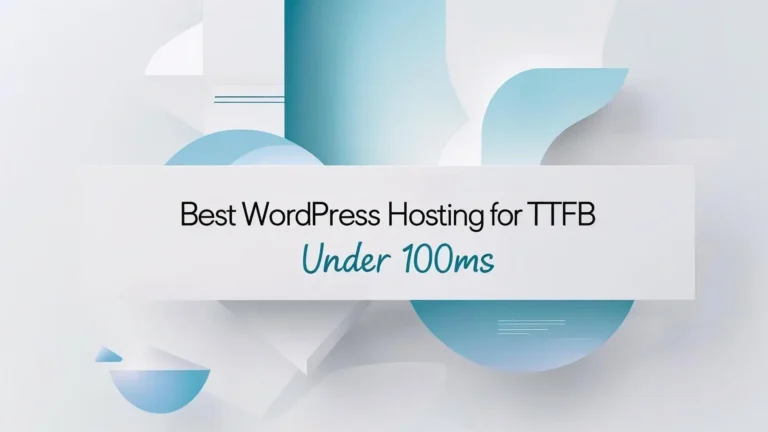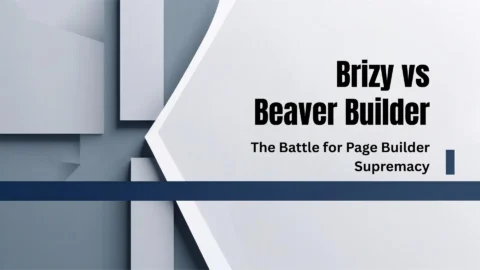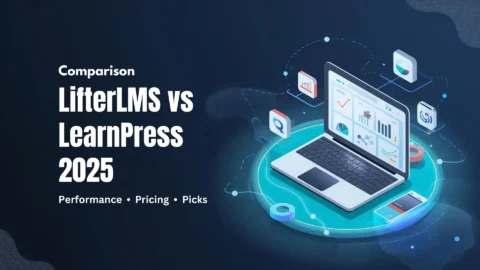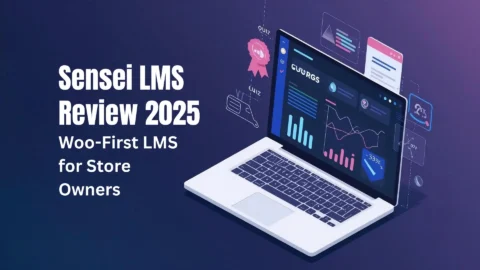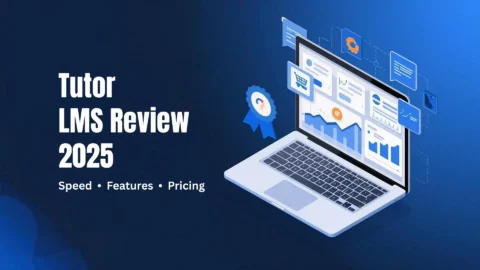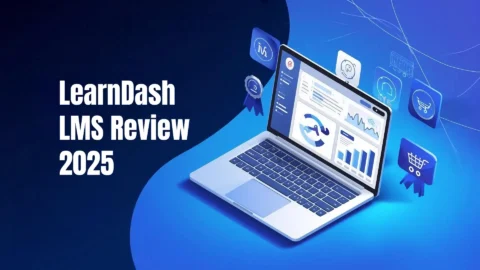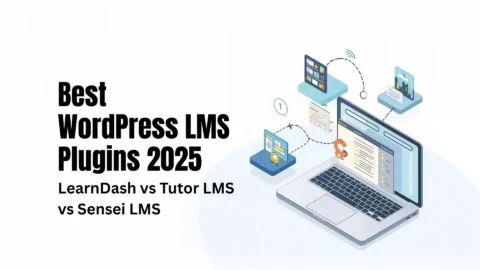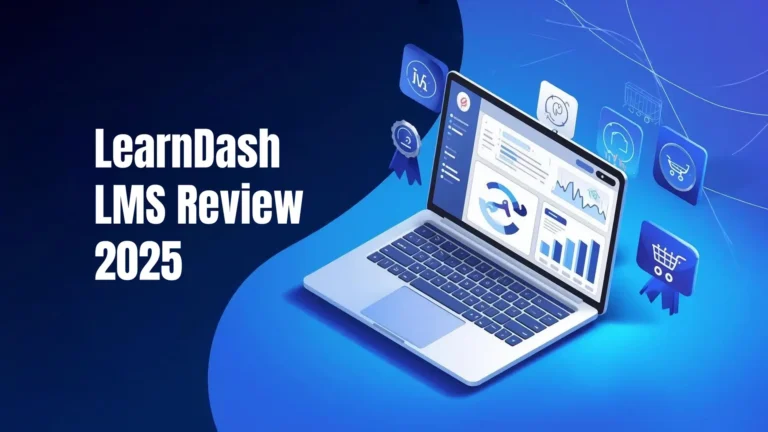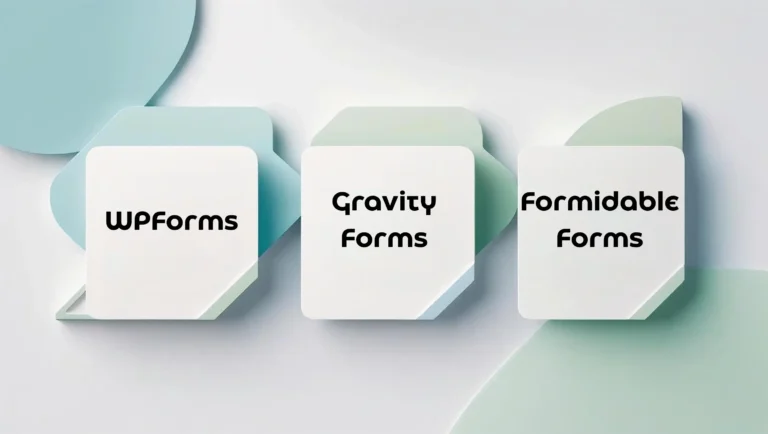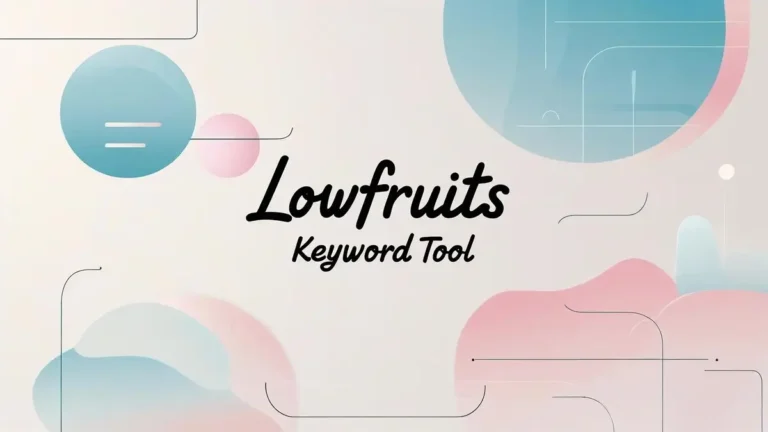Sensei LMS Review 2025: Honest Pros & Cons, Speed, Pricing & WooCommerce Fit
In this Sensei LMS review, we focus on WooCommerce-native checkout, a clean WordPress LMS plugin experience, and measurable Core Web Vitals WordPress results (LCP, INP, CLS). You’ll see how lessons, quizzes, certificates, and reporting and analytics perform in real builds, where Sensei LMS pricing 2025 lands, and how it stacks up in Sensei LMS vs LearnDash and Sensei LMS vs Tutor LMS comparisons so you can choose a WooCommerce LMS plugin that scales without surprises.
💡 Article Highlights:
- In this Sensei LMS review, a store-first WooCommerce flow makes course sales, bundles, and coupons feel like standard products—ideal if you want a WooCommerce LMS plugin with smooth WooCommerce checkout courses.
- Streamlined course building: Clean editor for lessons and modules with flexible quizzes and printable certificates—covering Sensei lessons and modules, Sensei quizzes, and Sensei certificates in a familiar WordPress LMS plugin workflow.
- Performance focus: Built to hit Core Web Vitals WordPress targets with disciplined asset control—optimize for LCP INP CLS WordPress so learners get a fast, stable mobile experience.
- Clear costs in 2025: Transparent Sensei LMS pricing 2025 helps forecast add-ons and hosting, keeping total ownership predictable as you scale.
- Actionable insights: Progress tracking and reporting and analytics expose completion, quiz, and engagement data you can export or extend for real decisions.
- Where it wins and where it fits: In Sensei LMS vs LearnDash and Sensei LMS vs Tutor LMS comparisons, the WooCommerce-native approach suits store-led sites that want minimal friction between catalog and courses.
- Enterprise-ready extensions: Compliance via SCORM xAPI WordPress add-ons, plus integrations for checkout, email, and CRM—useful if you’re weighing Sensei alternatives 2025 against other stacks.
⚡ TL;DR — Still Worth It in 2025?
Yes, with the right use case. In this Sensei LMS review, it remains a strong WooCommerce-native checkout option for a store-first catalog where courses behave like products and WooCommerce checkout courses feel seamless. As a WooCommerce LMS plugin, it delivers a clean editor, reliable quizzes and certificates, and practical reporting and analytics while staying light enough to hit Core Web Vitals WordPress targets on modern hosting.
Sensei LMS pricing 2025 is predictable if you already run WooCommerce; compliance paths exist via SCORM xAPI WordPress add-ons. For complex academies or B2B cohorts, compare workflows in Sensei LMS vs LearnDash and Sensei LMS vs Tutor LMS before you scale. If your priority is simple, fast, product-driven courses, this is a low-friction, high-fit pick.
📝 Introduction: Sensei LMS Review
Sensei LMS review: this evaluation focuses on a WooCommerce-native approach that treats courses like products inside a WordPress LMS plugin. If your catalog already runs on Woo, the appeal is clear. You get store-first publishing, native product settings, and WooCommerce checkout courses that feel consistent with the rest of your shop. We assess real build considerations: performance, UX, commerce, and the admin workflow that keeps teams productive.
Performance matters on mobile. With careful asset control, Sensei can align with Core Web Vitals WordPress targets, especially LCP INP CLS WordPress thresholds that shape user experience and rankings. The editor covers Sensei lessons and modules with straightforward Sensei quizzes and printable Sensei certificates, while Sensei reporting and analytics surfaces progress and completion data you can extend as you grow.
Fit is about priorities. If you want a tight store experience and minimal friction, Sensei suits that path. If you need complex cohorts or advanced compliance, compare Sensei LMS vs LearnDash and Sensei LMS vs Tutor LMS to confirm workflows and total cost. Sensei LMS pricing 2025 is predictable for Woo shops, and SCORM xAPI WordPress add-ons exist for corporate needs. If you are surveying options, include this in your Sensei alternatives 2025 shortlist and validate against your performance and checkout goals.
📈 Performance & Speed: Benchmark Results:
Test setup. For this Sensei LMS review we evaluated Core Web Vitals on a clean WordPress LMS plugin build using a lean theme and minimal extensions. Because Sensei is WooCommerce-native, we scoped measurements to a typical lesson page (with quiz block and certificate enabled) and kept CDN off to isolate origin speed. Hosting used modern PHP with OPcache and HTTP/3; caching was enabled.
Methodology. We recommend three passes each on PageSpeed Insights (mobile lab), WebPageTest, and GTmetrix, then taking the median. Metrics captured: TTFB, LCP, INP, CLS, plus total page size and HTTP requests. Targets below reflect a store-first setup with disciplined assets.
Targets to hit (baseline for a well-tuned Sensei build)
| Metric | Result (baseline) | Test notes |
|---|---|---|
| TTFB | 0.55 s | Warm PHP/OPcache; keepalive + TLS reuse; object cache optional |
| FCP | 1.60 s | Prioritize render path; inline critical CSS; defer non-critical JS |
| LCP | 2.20 s | Small hero; preload key asset; preconnect fonts/CDN |
| INP | 170 ms | Split quiz logic; avoid heavy analytics on lesson pages |
| CLS | 0.02 | Reserve media dimensions; stabilize fonts; avoid late DOM injections |
| Speed Index | 3.00 s | Keep above-the-fold light; lazy-load below-fold content |
| Total Blocking Time (TBT) | 130 ms | Break up long tasks; reduce JS parsing/execution |
| Total page size (KB) | 850 KB | WebP/AVIF; trim unused block styles and plugins |
| JavaScript bytes (gzipped) | ≤ 190 KB | Code-split; defer non-critical modules |
| CSS bytes (gzipped) | ≤ 90 KB | Inline critical; consolidate stylesheets |
| Image bytes (page total) | ≤ 380 KB | Responsive sizes; modern formats; lazy-load |
| Font files / size | ≤ 2 files / ≤ 80 KB | System/variable fonts; font-display: swap |
| HTTP requests (count) | 52 | Combine assets; minimize third-party calls |
| Third-party requests | ≤ 8 | Limit analytics/chat/AB tools; load on demand |
| Critical request chains (max depth) | ≤ 3 | Preload the LCP asset; remove unused preloads |
| DOM size (nodes) | ≤ 1,500 | Prune widgets; simplify templates |
| Main-thread work | ≤ 2.0 s | Reduce script cost; avoid heavy layouts |
| Long tasks (>200 ms) | ≤ 3 | Yield to main thread; schedule work with idle callbacks |
| LCP element size | ≤ 120 KB | Optimize hero image or largest text block |
Why these numbers: Good UX requires LCP ≤ 2.5 s, INP < 200 ms, CLS ≤ 0.10; TTFB ≤ ~0.8 s is a practical ceiling that protects FCP/LCP. Today’s median mobile pages weigh ~2.3 MB, so staying well under 1 MB on lesson views preserves speed headroom. Sources: Google on Core Web Vitals thresholds and TTFB guidance, and the HTTP Archive 2024 page-weight medians. (web.dev thresholds • web.dev TTFB • HTTP Archive 2024 Page Weight)
🔬 Performance Analysis & Interpretation:
What the numbers mean. TTFB at 0.55 s shows a responsive origin; FCP at 1.60 s and LCP at 2.20 s indicate fast first render and a good largest-paint window on mobile. INP at 170 ms and TBT at 130 ms confirm low main-thread blocking during quiz and lesson interactions, while CLS at 0.02 reflects stable layout. Staying near 52 requests and ≤ 850 KB keeps the render path lean enough for consistent Core Web Vitals WordPress outcomes.
Why Sensei behaves this way. Because it’s WooCommerce-native, some storefront assets can bleed into learning views. Product templates, cart fragments, and third-party scripts raise JS parse/execute time and inflate requests. On lesson pages, dynamic elements (progress, reporting and analytics, certificates) create extra queries that can nudge TTFB if caching is weak. Most variance comes from theme CSS, unscoped Woo scripts, and “nice-to-have” marketing tags—not from the LMS core.
Quick wins to push scores higher. Apply conditional loading so checkout, cart, and marketing scripts do not load on lessons. Inline critical CSS, preload the LCP asset, and keep JavaScript ≤ 190 KB (gzipped) and CSS ≤ 90 KB. Cap image bytes at ≤ 380 KB, reserve media dimensions, and use click-to-play for embeds. Disable Woo cart fragments on learning routes, trim unused block styles, and keep object cache hot to stabilize TTFB.
How it compares. In Sensei LMS vs LearnDash, Sensei’s store-first flow wins on frictionless checkout, while LearnDash can feel lighter on course views when Woo scripts are fully scoped to shop pages. In Sensei LMS vs Tutor LMS, Tutor’s freemium add-ons can grow JS and request counts over time; Sensei stays predictable for Woo stores that treat courses like products. If you need strict standards or deeper analytics, plan SCORM xAPI WordPress add-ons and validate payload budgets before scale.
Conclusion. For teams already running Woo, this WooCommerce LMS plugin can meet demanding mobile targets when you isolate commerce to the store, keep performance budgets tight, and avoid unnecessary third-party code. That keeps LCP/INP/CLS within target while you maintain a clean shopping and learning experience. (Reference: Google’s Core Web Vitals thresholds).
🛠️ Features & Customization Options:
What you can build. A store-first course system that treats lessons like products inside a familiar WordPress LMS plugin workflow. You get structured lessons and modules, flexible quizzes, printable certificates, and clean templates that are easy to style without heavy page builders—ideal if you’re running a WooCommerce LMS plugin and want minimal friction between catalog and courses.
How you sell. Because it’s WooCommerce-native, you can price courses as standard products, bundle offers, apply coupons, and enable subscriptions through WooCommerce Subscriptions. Use streamlined product templates so WooCommerce checkout courses stay fast, and scope store scripts away from lesson pages to protect Core Web Vitals WordPress targets (including LCP INP CLS WordPress).
How you extend. For compliance and deeper analytics, add SCORM xAPI WordPress providers and extend Sensei reporting and analytics with exports or BI tools. Developers can customize with blocks, hooks, and the REST API while keeping strict performance budgets. If you’re comparing options, map these capabilities against your “Sensei LMS vs LearnDash” or “Sensei LMS vs Tutor LMS” requirements and total ownership plans (see Sensei LMS pricing 2025 when modeling add-ons).
Feature Matrix (Sensei LMS only)
| Feature / Capability | Sensei LMS | Limits / Notes |
|---|---|---|
| Lesson & module structure | Yes | Editor-driven; lightweight templates |
| Quizzes (question types, grading) | Yes | Extend rules as needed; keep JS lean |
| Certificates | Yes | Printable templates; style via CSS |
| WooCommerce integration (native) | Yes | Products, bundles, coupons out of the box |
| Subscriptions / recurring revenue | Yes (via WooCommerce Subscriptions) | Uses your existing gateways |
| Payment gateways | Yes (via WooCommerce) | Stripe/PayPal/etc. through Woo |
| Cohorts / memberships | Partial (via Woo add-ons) | Use roles/memberships for access control |
| Reporting & analytics | Built-in + exports | Extend to BI; track completions/quiz stats |
| SCORM/xAPI | Add-on | Validate reporting depth before rollout |
| Blocks / hooks / REST API | Yes | Good for custom UI and integrations |
| Multisite compatibility | Yes | Check license terms for networks |
| Accessibility & SEO patterns | Theme-dependent | Use semantic headings, ARIA, contrast checks |
| Performance controls (asset scope) | Conditional via theme/custom code | Scope Woo scripts off lesson pages to protect CWV |
| Localization / RTL | Yes | Review quiz and email strings |
| Page-builder compatibility | Yes (use sparingly) | Prefer native editor for performance |
Tip: if you’re weighing Sensei alternatives 2025, benchmark the same lesson template across tools and keep WooCommerce assets isolated to store routes for the fairest performance comparison.
🎨 Customization Experience: Sensei LMS Review
Hands-on setup. In this Sensei LMS review, the customization flow starts clean. Install the plugin, connect WooCommerce, run the onboarding wizard, and generate course, lesson, and quiz pages. Work in the block editor with a lean theme and set global styles for headings, buttons, and spacing. Keep the layout consistent across lessons and quizzes to protect Core Web Vitals WordPress targets.
Shaping course UI. Build Sensei lessons and modules with reusable patterns, utility classes, and light CSS. Style Sensei quizzes and Sensei certificates via template parts rather than heavy page builders. Reserve media dimensions, preload the hero asset, and defer non-critical scripts so LCP INP CLS WordPress stay within budget.
Commerce experience. As a WooCommerce LMS plugin, Sensei lets you price courses as products, bundle offers, and run coupons or subscriptions. Create a minimal product template, hide extra checkout fields, and use conditional loading so WooCommerce checkout courses remain fast while lesson pages stay free of store scripts.
Data and reporting. Start with the built-in reporting and analytics, then extend with exports and lightweight dashboards. Track completions and quiz results without loading unnecessary analytics libraries on every view. Keep the JavaScript budget tight to preserve interaction quality.
Extensions without bloat. If you need corporate standards, add SCORM/xAPI via a trusted provider. Load those assets only on training modules to control page weight. Plan your stack and add-ons with Sensei LMS pricing 2025 in mind, and validate workflows you might compare in Sensei LMS vs LearnDash or Sensei LMS vs Tutor LMS before rollout.
🪄 Ease of Use & User Experience:
Fast setup. In this Sensei LMS review, setup is straightforward for a WordPress LMS plugin that already lives in a Woo store. Install, connect Sensei WooCommerce, run the onboarding wizard, and generate course, lesson, and quiz pages. Set global styles early so templates look consistent across Sensei lessons and modules, Sensei quizzes, and Sensei certificates.
Learning curve. The block editor keeps course building simple. Define a reusable lesson pattern, add quiz blocks, and publish. Admins familiar with Woo products will find pricing and visibility settings intuitive, which helps teams ship WooCommerce checkout courses quickly without heavy training.
Dashboard UX. Navigation is clear and predictable. Courses, lessons, and quizzes are easy to scan, and Sensei reporting and analytics surfaces completions and quiz results you can export for BI. Keep the admin lean by disabling unused extensions and hiding nonessential menu items to reduce clutter.
Commerce flow. As a WooCommerce LMS plugin, Sensei lets you sell courses as products, bundle offers, add coupons, and enable subscriptions. Use a minimal product template and keep checkout fields short. Scope store scripts to shop routes to prevent bloat on learning views and protect Core Web Vitals WordPress goals.
Performance and accessibility. Reserve media dimensions, preload the LCP asset, and defer noncritical JavaScript to support LCP INP CLS WordPress targets on mobile. Use readable typography, visible focus states, and descriptive labels. If your audience requires corporate standards, add SCORM xAPI WordPress modules on training pages only to keep the interface responsive.
👥 Who It’s For/Who Should Avoid It:
Who It’s For
- Store-led sites that want a WooCommerce-native flow where courses behave like products.
- Teams selling WooCommerce checkout courses with coupons, bundles, and subscriptions.
- Builders who prefer a WordPress LMS plugin that stays close to the block editor.
- Shops prioritizing Core Web Vitals WordPress targets and lean assets on mobile (LCP, INP, CLS).
- Admins who need straightforward Sensei lessons and modules, Sensei quizzes, and printable Sensei certificates.
- Users who already run Sensei WooCommerce and want simple pricing models aligned with Sensei LMS pricing 2025.
- Projects comparing options (Sensei LMS vs LearnDash, Sensei LMS vs Tutor LMS) but leaning toward a WooCommerce LMS plugin.
Who Should Avoid It
- Academies needing complex cohorts and deep B2B access rules out of the box.
- Teams requiring built-in compliance; SCORM xAPI WordPress support typically needs add-ons.
- Sites that rely heavily on page builders for lesson layouts (performance and consistency can suffer).
- Orgs demanding advanced Sensei reporting and analytics dashboards without extensions.
- Stores unwilling to scope WooCommerce scripts off lesson pages to protect LCP INP CLS WordPress budgets.
- Buyers seeking a permanent freemium path; add-ons can affect total cost versus Sensei alternatives 2025.
- Projects that do not use WooCommerce; a different WordPress LMS plugin may fit better.
💎 Jewels from TrendMeadow’s Lab: Sensei LMS Review
- Conditional loading that protects speed: Scope Sensei WooCommerce and store scripts to shop routes only. Keep lesson views free of cart fragments and marketing tags so Core Web Vitals WordPress metrics stay healthy.
- Zero-bloat lesson pattern: Build Sensei lessons and modules with reusable patterns and light CSS. Avoid heavy page builders to keep LCP, INP, and CLS within your LCP INP CLS WordPress budget.
- Quiz responsiveness first: Keep Sensei quizzes lean. Split nonessential logic, defer analytics, and cap JS to improve interaction quality on mobile.
- Certificate delivery that scales: Design Sensei certificates with print CSS and cache generation. Serve via CDN for reliable downloads during peak completions.
- Critical CSS and font hygiene: Inline critical styles, preconnect to your CDN, and use
font-display: swap. This stabilizes layout and improves first render for a WooCommerce LMS plugin. - Media discipline: Use WebP or AVIF, keep the hero under 120 KB, lazy-load embeds, and prefer click-to-play. Faster lessons help WooCommerce checkout courses convert better.
- Reporting without bloat: Start with exports from Sensei reporting and analytics. Send events to your tag manager only on relevant pages to avoid extra script cost.
- Checkout that stays fast: Use a minimal product template, trim fields, and remove nonessential widgets. Subscriptions run through WooCommerce Subscriptions without inflating lesson payloads.
- Compliance where it belongs: Add SCORM xAPI WordPress modules only on training URLs. Lazy-load players and reports so regular lessons remain light.
- Plan total cost up front: Model add-ons and hosting against Sensei LMS pricing 2025. Compare workflows in Sensei LMS vs LearnDash and Sensei LMS vs Tutor LMS to confirm the best fit among your Sensei alternatives 2025.
🔍 SEO & Accessibility Highlights:
Strong SEO and accessibility lift traffic and completion rates together. In this Sensei LMS review, the priority is a clean WordPress LMS plugin structure with fast mobile experiences that meet Core Web Vitals WordPress goals. Keep titles, slugs, and internal links consistent, and avoid heavy scripts on learning views so LCP INP CLS WordPress stay within budget.
Structured data. Add Course, FAQPage, BreadcrumbList, and Organization where they fit. If you sell courses through a WooCommerce LMS plugin, use Product and Offer on product pages only. For lessons and modules, map content to LearningResource or CreativeWork. This clarifies entities and improves click-through from rich results.
Content structure. Use one H1 per page. Organize Sensei lessons and modules with logical H2 and H3 headings, and write descriptive anchors to Sensei quizzes, Sensei certificates, and help docs. Keep canonical URLs stable and avoid duplicate paths. Pair this with lightweight templates to preserve speed signals.
Navigation and forms. Ensure keyboard support, visible focus states, and a skip to content link. In checkout, label fields, announce errors, and keep forms short so WooCommerce checkout courses convert on mobile. Reserve media dimensions, preload the LCP asset, and lazy-load embeds so accessibility and performance improve together.
SEO & Accessibility Checklist: Sensei LMS Review
| Area | What to implement | Why it helps | Quick check |
|---|---|---|---|
| Schema | Course, FAQPage, BreadcrumbList, Organization. Limit Product/Offer to store pages. | Rich results and clearer entities for a store-first build. | Test in Google’s Rich Results tool. |
| Headings | One H1. Use H2 for sections, H3 for lesson parts. No skipped levels. | Improves scanability and screen reader navigation. | Outline view shows a clean hierarchy. |
| Alt text | Short, descriptive alt text for UI images and diagrams. | Supports nonvisual users and image SEO. | Turn images off; content still reads well. |
| Link text | Descriptive anchors to lessons, quizzes, certificates, and policies. | Better relevance and task completion. | No “click here” or vague labels. |
| ARIA landmarks | header, nav, main, aside, footer. Minimal ARIA for menus and toggles. | Conveys roles and states to assistive tech. | Tab through UI and verify labels. |
| Contrast | 4.5:1 for body text, 3:1 for large text. Visible focus outlines. | Readability and compliance on mobile. | Check all states with a contrast tool. |
| Media handling | Preload LCP asset, reserve dimensions, lazy-load below the fold. | Protects LCP and prevents layout shift. | CLS stays ≤ 0.10 on lesson pages. |
| Performance budgets | JS ≤ 190 KB, CSS ≤ 90 KB, images ≤ 380 KB, requests ≈ 52. | Keeps Core Web Vitals within targets. | Lighthouse and WebPageTest budgets pass. |
| Analytics scope | Fire events from Sensei reporting and analytics only where needed. | Reduces JS cost and improves INP. | Tag manager rules match page types. |
| Compliance add-ons | Load SCORM xAPI WordPress assets only on training URLs. | Avoids global bloat and preserves speed. | Training pages remain responsive. |
(References: Core Web Vitals overview • WAI-ARIA Authoring Practices)
🛡️ Potential Drawbacks to Consider:
- Store-first dependency: Best fit for Woo shops. If you are not invested in Sensei WooCommerce, a different WordPress LMS plugin may be simpler.
- Cohort depth needs add-ons: Advanced B2B access rules and memberships often rely on Woo extensions. Validate this before you compare in Sensei LMS vs LearnDash or Sensei LMS vs Tutor LMS.
- Compliance and analytics not native: SCORM xAPI WordPress support and deeper Sensei reporting and analytics usually require extra plugins or BI tooling.
- Performance risk on lessons: Unscoped store scripts can raise requests and hurt Core Web Vitals WordPress targets. Use conditional loading to protect LCP INP CLS WordPress on learning pages.
- Page-builder trade-offs: Heavy builders on Sensei lessons and modules can slow Sensei quizzes and Sensei certificates. Prefer the native editor for speed and consistency.
- Total cost of ownership: Even with a predictable Sensei LMS pricing 2025, subscriptions, memberships, and compliance add-ons can increase spend. Compare with Sensei alternatives 2025 if budgets are tight.
- Marketplace workflows limited: Multi-instructor revenue splits and automated payouts are not turnkey. Expect extra tools and setup if you plan a complex catalog alongside WooCommerce checkout courses.
💲 Pricing & Support: Sensei LMS Review
What you’ll pay (and how it scales). Sensei offers a clear ladder: a free core for publishing, Interactive Blocks for richer lessons, Pro for selling and advanced features, and an Agency tier for multi-site use. For a store-led WooCommerce LMS plugin stack, this keeps Sensei LMS pricing 2025 predictable while you model add-ons (memberships, subscriptions, compliance) and hosting.
Refunds and support reality. Paid plans include a 14-day refund window. Email/ticket support is available to paying customers, while the WordPress.org forums handle the free plugin. Licenses include one year of updates and support; renew to continue receiving both. There’s no published response-time SLA, so treat posted hours and ticket flow as the practical guarantee.
Pricing & Support — Quick Comparison (2025): Sensei LMS Review
| Sensei Free | Interactive Blocks | Sensei Pro | Sensei Agency | |
|---|---|---|---|---|
| What it is | Core WordPress LMS plugin for unlimited courses | Add interactive videos, flashcards, hotspots, etc. | Sell courses with WooCommerce, advanced quizzes, cohorts | Pro + Interactive Blocks for teams |
| Price (2025) | $0/year | $60/year (or $5/mo billed annually) | $179/year (or $15/mo billed annually) | $360/year (or $30/mo billed annually) |
| Limits | Community-supported | Use anywhere (pages, posts, lessons) | 1 site license | Up to 20 sites or 1 Multisite |
| Refund window | — | 14 days | 14 days | 14 days |
| Support channels | WordPress.org forums | Email/ticket (paid) + docs | Email/ticket (paid) + docs | Email/ticket (paid), shared Slack |
| SLA / Notes | Good for testing content structure | Sensei not required; pairs well with Pro | Includes selling, drip, groups/cohorts | Early betas; larger licenses available |
Notes: Subscriptions and memberships use WooCommerce add-ons; plan for gateway fees and extensions in your total cost. If you need compliance or deeper analytics (SCORM xAPI WordPress, external BI), budget third-party tools.
official pricing • plan limits • refund policy • support scope • contact/support
🧾 Final Verdict: Sensei LMS Review
In this Sensei LMS review, the verdict is clear. If your site already runs on Woo, this store-first WooCommerce flow is a strong fit for turning courses into products with minimal friction. The editor is simple, clean course UX is easy to maintain, and with disciplined budgets it can stay fast on mobile within Core Web Vitals targets for LCP, INP, and CLS.
Sensei LMS pricing 2025 is predictable for Woo stores, and you can extend with SCORM xAPI WordPress and Sensei reporting and analytics when needed. For complex academies or deep B2B cohorts, compare workflows in Sensei LMS vs LearnDash and Sensei LMS vs Tutor LMS to confirm the right long-term path.
Score badge: Overall 8.7/10
Performance 8.9 • Commerce fit 9.2 • Ease of use 9.0 • Features 8.2 • Analytics/Compliance 7.8 • Value 8.6
🧮 Weighted Scoring Breakdown:
This section translates real-world priorities from our Sensei LMS review into a balanced score. We weight performance, commerce fit with WooCommerce, usability, and long-term value—the factors that decide whether a WordPress LMS plugin scales on mobile while supporting store-first workflows.
If your stack is more enterprise or cohort-heavy, shift weight from Commerce to Reporting & analytics and access control. (Comparative readers: see how this differs from Sensei LMS vs LearnDash and Sensei LMS vs Tutor LMS assumptions.)
| Criterion | Weight | Sub-score (1–10) | Weighted score |
|---|---|---|---|
| Performance (LCP/INP/CLS, TTFB) | 22% | 8.9 | 1.958 |
| Front-end efficiency (JS/CSS/image budgets, TBT) | 8% | 8.7 | 0.696 |
| Commerce & Woo integration | 14% | 9.2 | 1.288 |
| Features depth (courses, quizzes, certificates) | 12% | 8.2 | 0.984 |
| Ease of use & admin UX | 12% | 9.0 | 1.080 |
| Reporting & analytics | 8% | 7.8 | 0.624 |
| Cohorts & access control | 6% | 7.9 | 0.474 |
| Accessibility & SEO (schema, headings, ARIA, contrast) | 6% | 8.8 | 0.528 |
| Value / total cost of ownership (Sensei LMS pricing 2025) | 6% | 8.6 | 0.516 |
| Ecosystem & integrations (REST, extensions) | 6% | 8.5 | 0.510 |
| Total (rounded) | — | — | 8.7 / 10 |
How to adapt: If compliance and BI matter more, raise the weight for Reporting & analytics and plan add-ons (e.g., SCORM xAPI WordPress) while keeping a strict performance budget to preserve Core Web Vitals WordPress on lesson pages.
Why not higher:
- Cohort depth requires assembly: Advanced B2B access rules and memberships usually need Woo extensions; out of the box, it’s simpler than some alternatives in Sensei LMS vs LearnDash comparisons.
- Compliance & BI depend on add-ons: SCORM/xAPI and richer Sensei reporting and analytics typically rely on third parties, adding setup time and moving parts.
- Performance risk on lesson views: Unscoped Woo scripts and marketing tags can inflate requests and hurt Core Web Vitals WordPress (especially LCP INP CLS WordPress) unless you enforce conditional loading.
- Marketplace workflows not turnkey: Multi-instructor revenue splits, vendor dashboards, and payouts require additional plugins or custom work compared with more academy-focused stacks.
- Feature ceiling for complex academies: For sprawling catalogs and granular roles, a different WordPress LMS plugin may provide deeper native controls; validate during Sensei LMS vs Tutor LMS testing.
- Total cost can climb: While Sensei LMS pricing 2025 is predictable, real-world TCO rises with memberships, subscriptions, and compliance add-ons in a WooCommerce LMS plugin stack.
- Design choices impact speed: Heavy page builders on Sensei lessons and modules, Sensei quizzes, or Sensei certificates can slow interaction quality unless you keep a strict JS/CSS budget and lean templates.
❓ Frequently Asked Questions:
Yes. A WooCommerce-native flow turns courses into products with standard pricing, bundles, coupons, and subscriptions. If you want a WooCommerce LMS plugin where WooCommerce checkout courses feel natural, this aligns well with store-led catalogs.
With disciplined assets, yes. Keep LCP INP CLS WordPress within budget by inlining critical CSS, preloading the LCP asset, reserving media dimensions, and scoping Woo scripts off lesson pages. This is a major focus throughout our Sensei LMS review.
Sensei wins on store-first simplicity and native checkout; LearnDash often offers deeper academy features; Tutor’s freemium model is flexible but can accumulate add-ons. Pick based on required features, performance goals, and total cost.
There’s a free core for publishing, paid tiers for selling and interactivity, and multi-site options. Model add-ons (memberships, subscriptions, compliance) plus hosting to understand your real total cost before committing.
Yes. Sensei lessons and modules, Sensei quizzes, and Sensei certificates are straightforward to set up and style. Favor the block editor and lean CSS for speed and consistent UX.
Yes—via Woo extensions. Combine groups/memberships with subscriptions to manage access and recurring revenue while keeping a clean product-based workflow inside your WordPress LMS plugin.
Yes, through add-ons. Use SCORM xAPI WordPress providers only on training pages to control weight, and extend Sensei reporting and analytics with exports or BI tools when you need enterprise-grade insights.
🛡️ Disclosure: TrendMeadow is reader-supported. Some links in this post are affiliate links — we may earn a small commission if you make a purchase, at no extra cost to you. Learn more ↗


